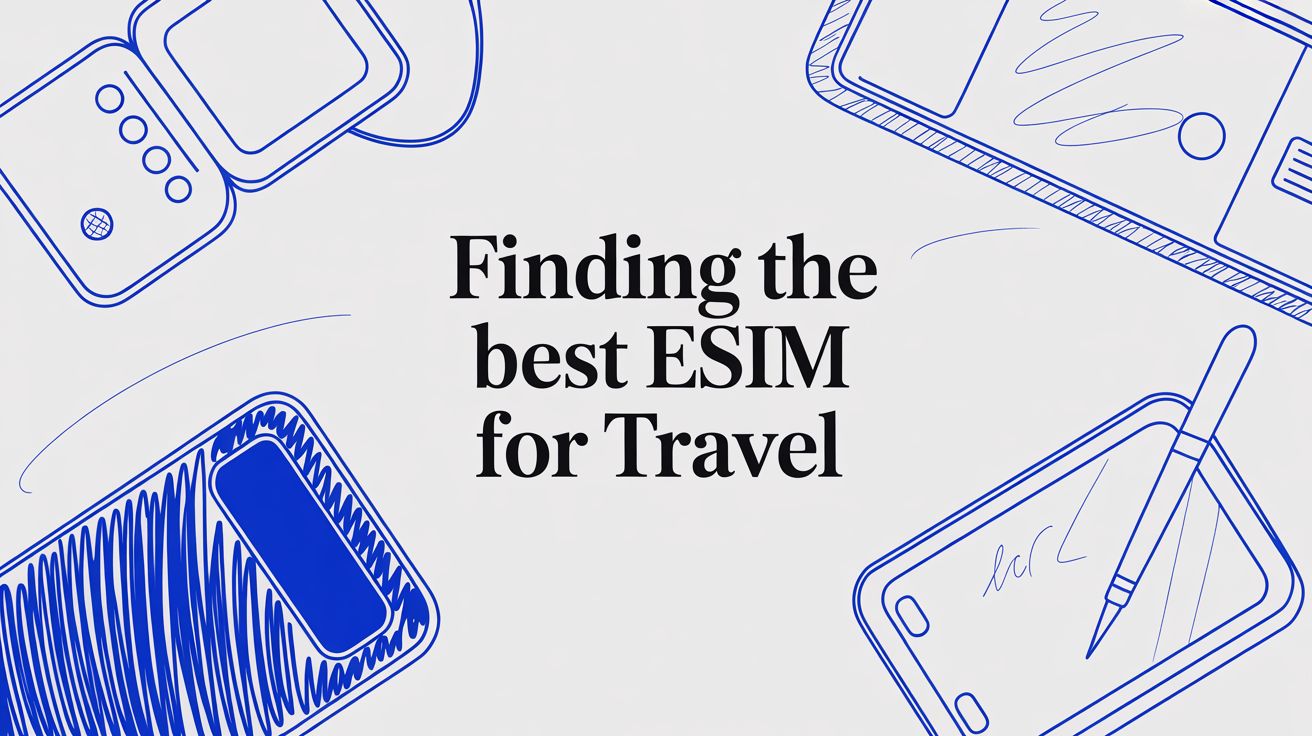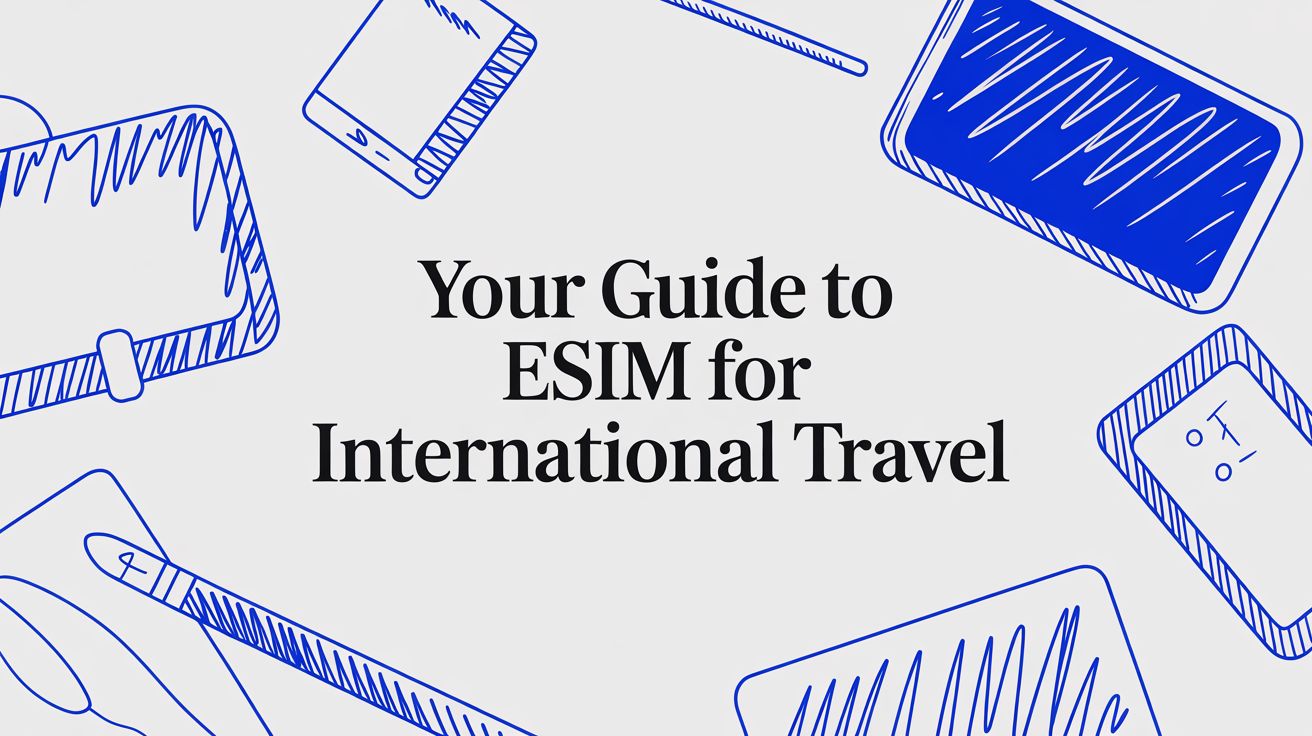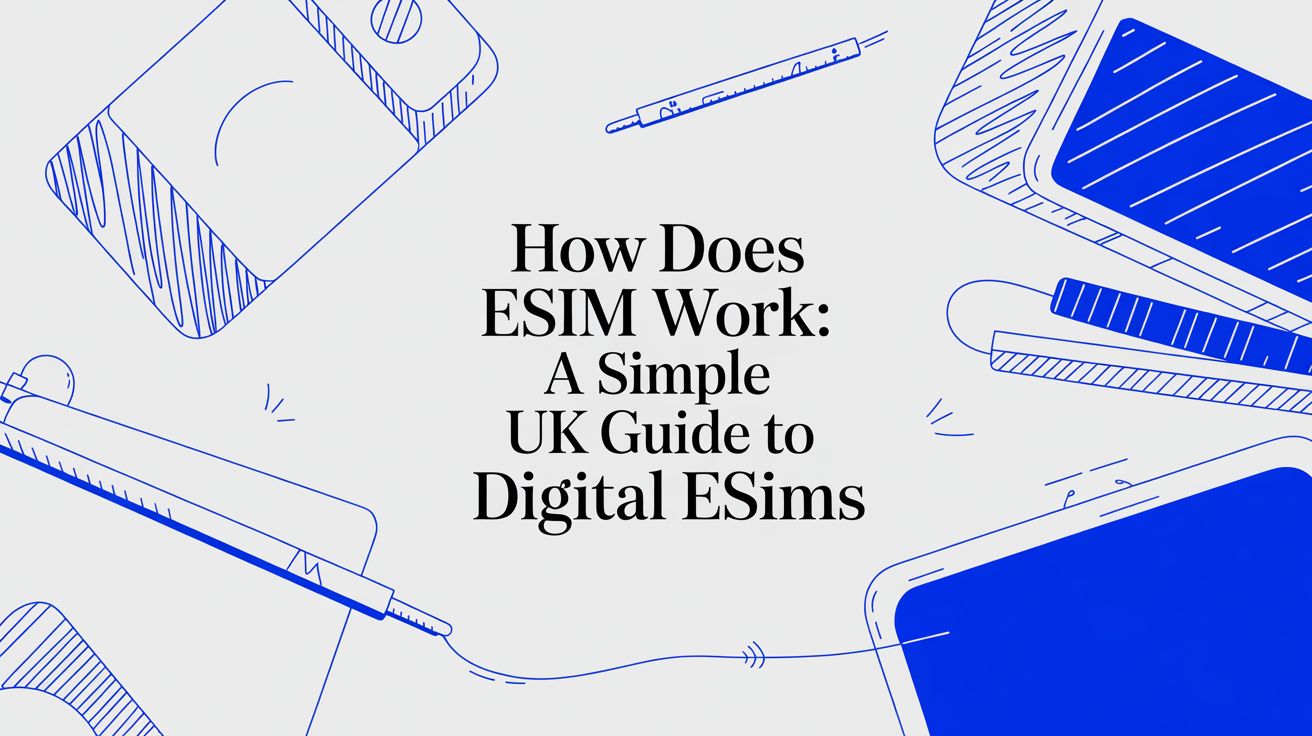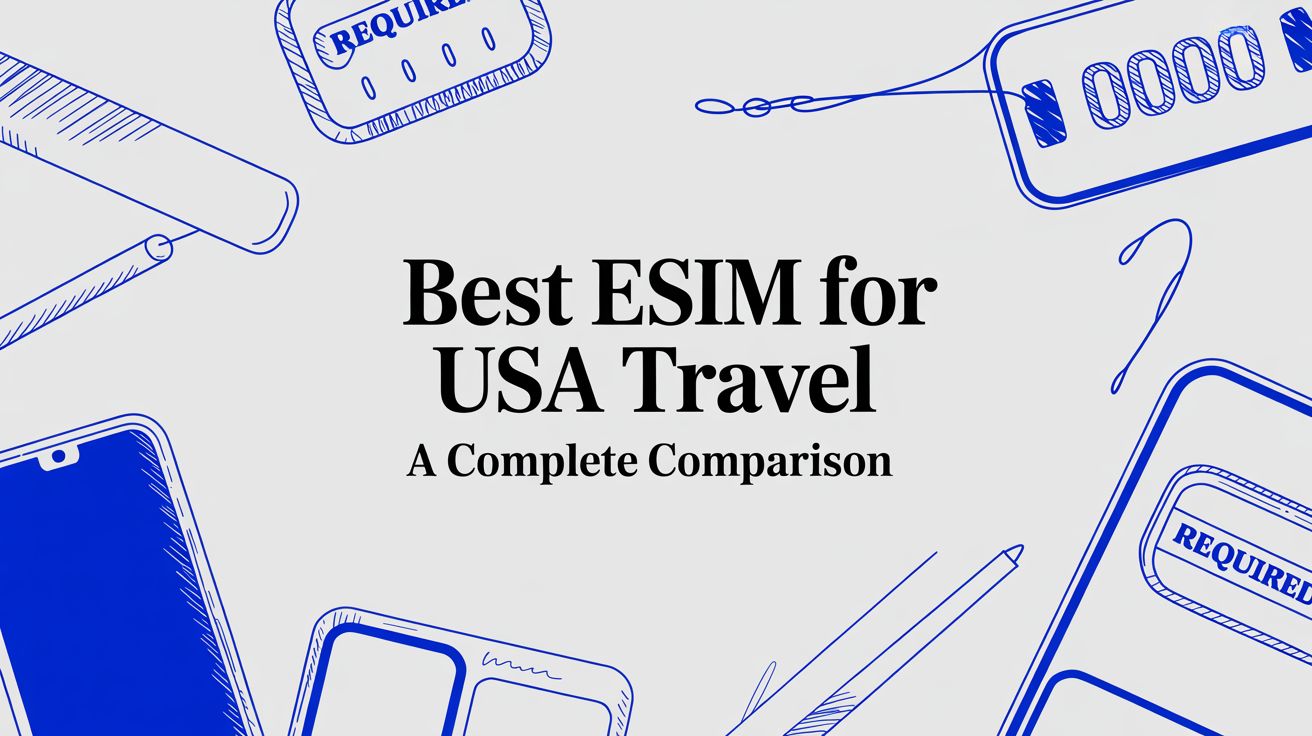
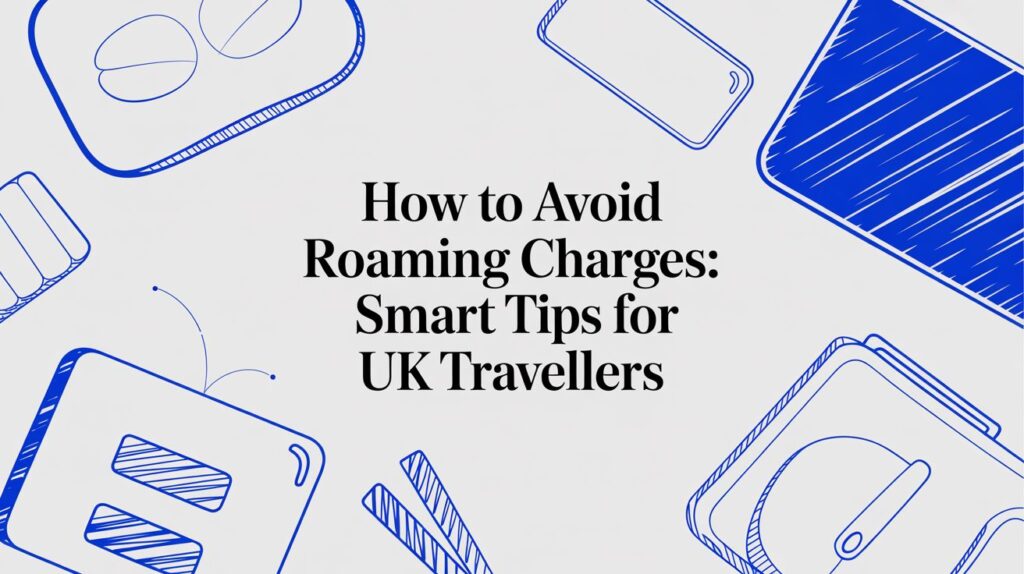
The easiest, no-fuss way to sidestep roaming charges is to simply disable data roaming in your phone’s settings and stick to Wi-Fi. But if you need to stay connected on the go, grabbing an international eSIM or a local SIM card is your best bet for affordable data without the nasty surprises from your provider back home.
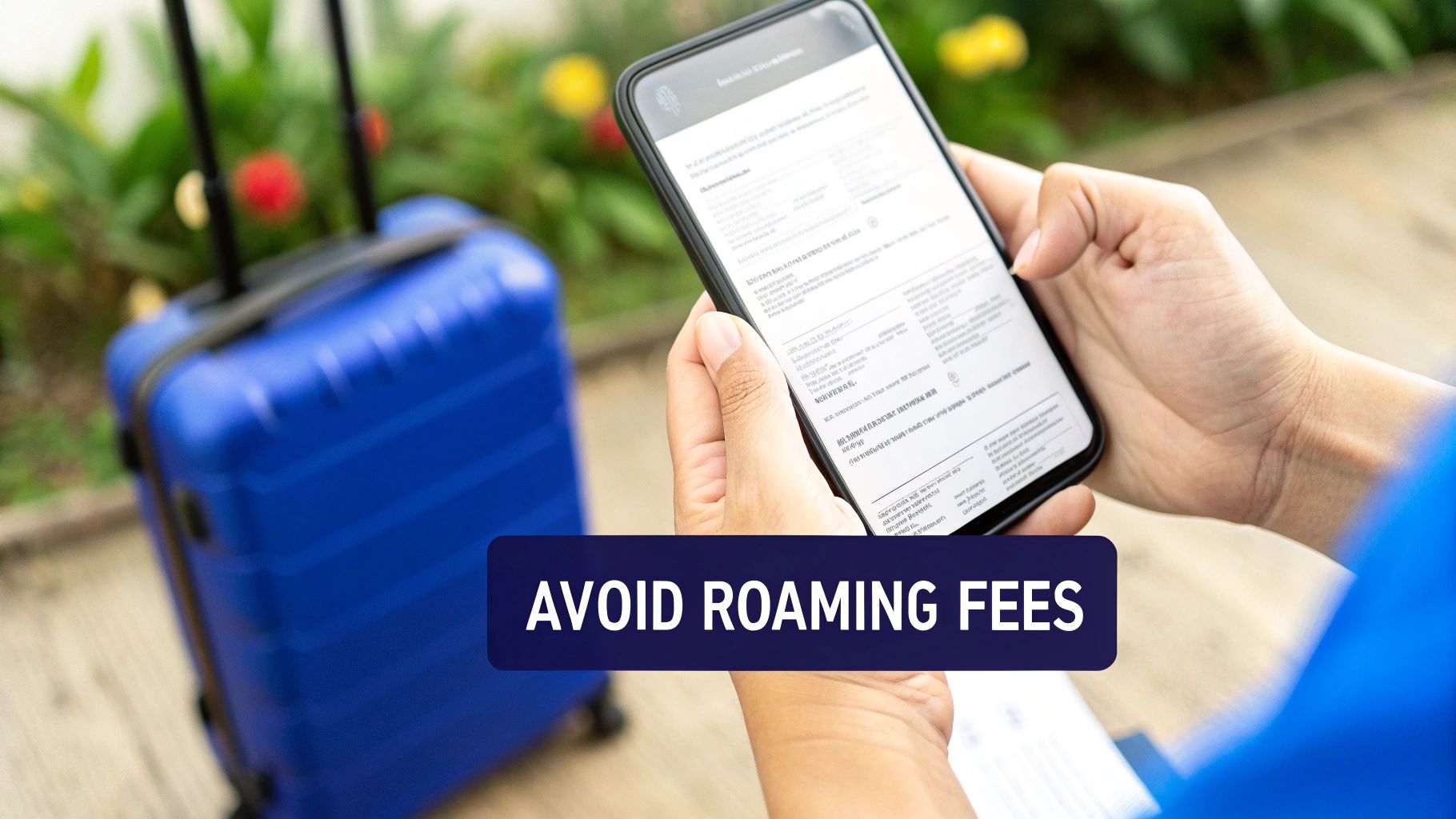
We’ve all heard the horror stories. You get back from a brilliant holiday, relaxed and refreshed, only to be met with a mobile bill that looks more like a mortgage payment. That sinking feeling is becoming all too familiar for UK travellers.
Since Brexit, the ‘Roam Like at Home’ safety net that protected us across the EU has been pulled away by most major providers. The result? Costly roaming fees have made a comeback, catching countless people off guard who don’t realise their everyday phone habits now come with a hefty price tag abroad.
What used to be a seamless, free experience can now silently rack up eye-watering charges. And it’s not just about making a few calls—it’s the background data that often delivers the biggest financial blow.
Think about how you use your phone on a typical day out. Those simple, almost unconscious actions can quickly inflate your bill when you’re overseas.
Let’s say you’re wandering through the streets of Rome:
A single day of navigating, sharing memories, and checking messages could easily add £10, £20, or even more to your bill. The costs are usually calculated per megabyte, turning what feels like minor usage into a major expense. It’s a harsh reminder of the hidden costs that can sour the memory of an otherwise perfect trip.
The scale of this problem is huge. An estimated 13 million Brits travel abroad each summer, and together they are projected to spend over £350 million on roaming fees during the peak season. That breaks down to a daily cost of around £2 to £2.60 per person, but some providers are charging as much as £6 per gigabyte. Find out more about UK traveller roaming costs.
Getting a clear picture of these potential costs is the first step toward creating a smart travel strategy. Before you even pack your bags, it’s crucial to accept that your domestic mobile plan probably doesn’t follow you abroad anymore.
With a little bit of planning, you can make sure the only surprises on your holiday are good ones—not a shocking bill waiting for you when you get home.
The best way to avoid a nasty roaming bill is to get ahead of it before you even leave for the airport. Think of it as a pre-flight tech check-up. Spending just a few minutes tweaking your phone’s settings can honestly save you a small fortune when you get back. It’s all about taking control so your phone doesn’t start racking up charges the second you touch down.
Your first stop should be your mobile provider’s website or app. Log in, head to the international travel section, and get familiar with your plan’s specific roaming policy. You need to know the daily charges, data caps, and exactly which countries are included in any travel bundles. Never assume your destination is covered—double-check it yourself.
This is the big one. It’s the single most important step you can take. Switching off data roaming physically stops your phone from connecting to a foreign mobile network for data. It’s a simple toggle, but it’s your best line of defence.
Doing this blocks mobile data, but remember you can still make calls and send texts, which will likely have their own separate charges. The main goal here is to stop the number one cause of massive bills: background data usage from apps you aren’t even looking at.
Pro Tip: Even with data roaming switched off, I’ve seen things like visual voicemail use a tiny bit of data to download message previews. To be 100% safe, you could turn off mobile data altogether until you’re connected to Wi-Fi or have an alternative sorted. If you’re tired of these workarounds, it’s worth learning what an eSIM is and how it works, as it’s a much smoother way to handle data abroad.
Another smart move is to cut down on how much you need mobile data in the first place. Before you leave the house, take some time to download everything you’ll need for the journey and for when you first arrive.
Make sure you’ve downloaded:
One last thing—set up a data usage alert on your phone. Most phones have this built-in. You can set it to warn you when you’re getting close to a certain data limit, which is a fantastic safety net to have just in case.
Right, so you’ve fiddled with your phone’s settings. The next step is getting strategic about how you’ll actually stay connected abroad. Just letting your UK provider’s default roaming charges kick in is almost always the quickest way to an eye-watering bill. The good news? You’ve got much smarter, and cheaper, options.
Instead of paying a premium for doing nothing, you can pick a solution that actually fits your trip. The three main contenders are modern eSIMs, the old-school local SIM card, and your own network’s roaming add-on packages. Each has its own pros and cons, boiling down to how long you’re away, how much data you’ll get through, and what you value more: cost or convenience.
This simple decision tree can help you visualise the first steps in dodging those nasty roaming fees.
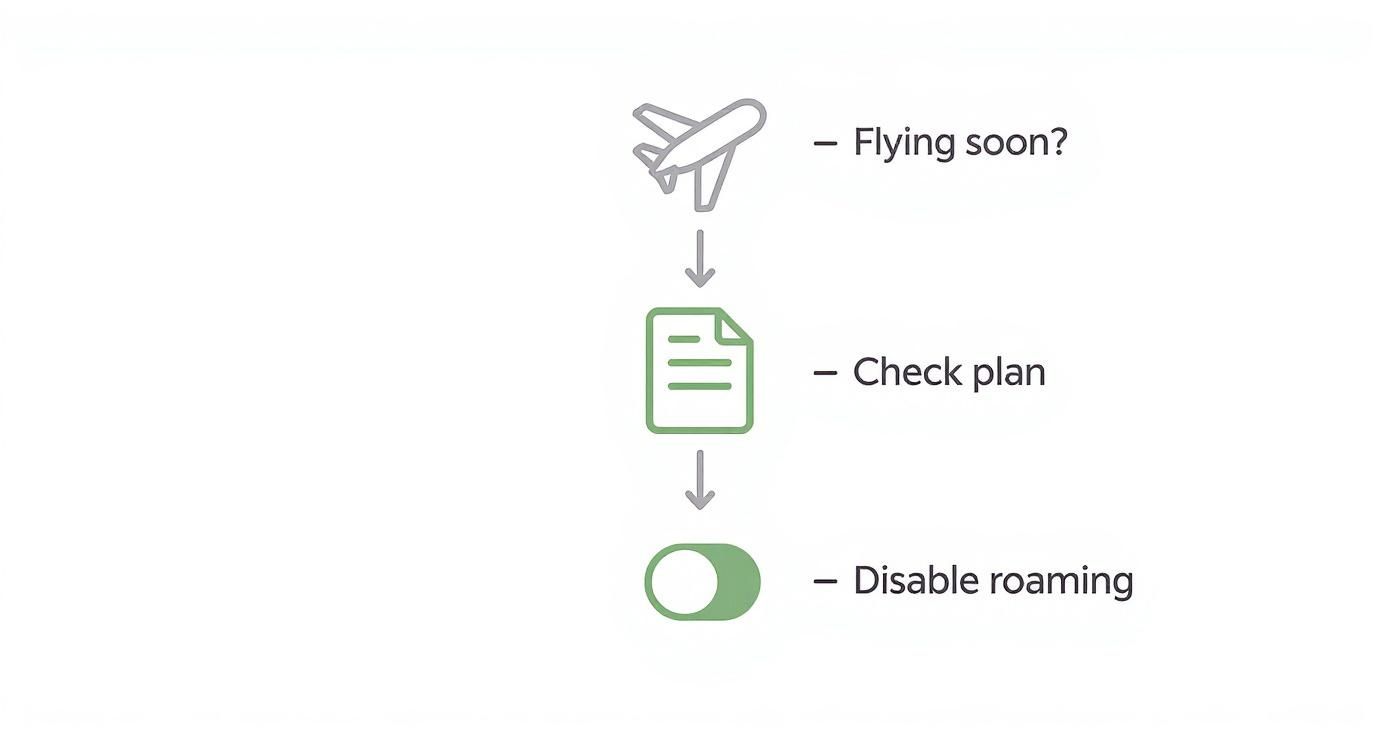
As you can see, it all starts with a few essential pre-travel checks. First, know what your current plan includes (or excludes!), then take direct action on your device before you even step on the plane.
The eSIM, or embedded SIM, has been a genuine game-changer for travellers. It’s a digital SIM that’s already built into most modern smartphones. This clever tech lets you buy and activate a data plan from a provider in your destination country without ever fumbling around with a tiny piece of plastic.
You can buy an eSIM online before you even pack your bags, get a QR code in an email, and have it ready to go in minutes. It means you can land, switch on your eSIM plan, and be connected to a local network straight away. It’s brilliant for short trips and multi-country holidays where you need hassle-free data from the second you arrive. Best of all, it lets you keep your UK SIM active for calls and texts while using the eSIM for much cheaper data. This guide on using an eSIM for international travel is a great resource to see if it’s the right fit for you.
The traditional method—popping into a shop and buying a local SIM card when you arrive—is still a fantastic, cost-effective option, especially if you’re staying put for a while. If you’re spending a few weeks or more in one country, a local SIM will almost always give you the most bang for your buck on data, calls, and texts.
You can usually find them in airports, corner shops, and official mobile provider stores. The main downside is the faff. You have to find a shop, maybe navigate a language barrier, and physically swap out your UK SIM. This also means you temporarily lose your UK number, which can be a pain for things like banking app authorisations or important calls from back home.
A weekend jaunt to Paris is the perfect scenario for the instant convenience of an eSIM. But for a two-week backpacking trip across Vietnam, the unbeatable value of a local SIM with a huge data allowance makes it the clear winner.
Of course, your own network wants to keep you on their books, so they offer daily or weekly roaming “add-ons”. These are definitely convenient—you can often activate them with a simple text message or a few taps in your provider’s app. But that convenience nearly always comes at a price, and often with tight limits.
Since Brexit, the major UK networks have changed their tune on roaming. EE, for example, charges £2.47 per day for EU roaming with a 50GB fair use cap, while Three has a £2 per day ‘Go Roam in Europe’ pass limited to 12GB. These passes can work for a very short trip, but the costs add up incredibly fast on anything longer than a weekend.
To help you weigh it all up, I’ve put together a quick comparison of how these three popular choices stack up against each other for a typical UK traveller.
| Feature | eSIM | Local SIM Card | Provider Add-On |
|---|---|---|---|
| Best For | Short trips, multi-country travel, and pure convenience. | Long stays, heavy data users, and budget-conscious travel. | Very short trips (1–2 days) where you prioritise ease of use. |
| Convenience | Excellent. Buy it online and activate it instantly. | Fair. You need to find a shop when you land. | Excellent. Super easy to activate via your provider’s app or by text. |
| Cost | Very competitive, and often much cheaper than add-ons. | Typically the cheapest option for getting lots of data. | Usually the most expensive choice per day or per gigabyte. |
| Your UK Number | Stays active for calls and texts on your primary SIM. | Is temporarily inactive while the local SIM is in your phone. | Remains fully active, just as it is at home. |
Ultimately, the best choice depends entirely on your specific trip. By thinking about it beforehand, you can easily save a small fortune and avoid any unwelcome surprises on your bill when you get back.

Even with a great value travel eSIM in your phone, the savviest travellers know how to stretch every megabyte. It all starts with a simple change in mindset: think ‘Wi-Fi first’. This little habit is one of the most effective ways of learning how to avoid roaming charges, as it trains you to default to free networks, saving your precious mobile data for when you’re actually on the move.
Public Wi-Fi should become your best friend for anything data-intensive. Airports, hotels, cafes, and many city squares offer free connections. I always use these spots to download offline maps for the day, catch up on social media, or back up my photos to the cloud. Just a word of advice: always use a VPN (Virtual Private Network) on public Wi-Fi. It’s a small step that keeps your personal information safe from anyone snooping on the network.
One of the most overlooked features on modern smartphones is Wi-Fi Calling. It’s an absolute game-changer. This handy tool lets you make and receive calls and texts through your normal UK phone number, but it cleverly routes everything over a Wi-Fi network instead of a mobile one.
Once you’ve flicked the switch, your phone automatically uses Wi-Fi Calling whenever it has a solid connection. Imagine you’re in your hotel room in Tokyo and need to call a landline in Manchester. With Wi-Fi Calling, it’s exactly the same as calling from your sofa at home – you completely sidestep those scary international call charges.
Here’s how to get it sorted:
Make sure you activate this before you leave home. It’s a genuine money-saver that keeps you connected on your usual number without the roaming bill anxiety.
Your smartphone is an incredibly powerful travel tool, even without an internet connection. The trick is to do a little prep work before you head out for the day by downloading apps and content designed to work offline. This single strategy can slash your data consumption while you’re out exploring.
The real win is turning your phone into a self-sufficient guide. By downloading maps, translation packs, and city guides ahead of time, you stop relying on a constant data stream and start travelling with more confidence and less cost.
Google Maps is the perfect example. Before you leave your hotel’s Wi-Fi, download the map for the entire city or region you’re in. You can then use GPS for turn-by-turn navigation, search for attractions, and find your way back, all without using a single byte of data.
In the same way, Google Translate lets you download language packs for instant offline translations. It’s a lifesaver. And if you do hit a snag and suddenly need a connection, our guide on troubleshooting mobile data while travelling has some quick fixes to get you back online.
When an employee heads abroad for work, roaming charges stop being a personal headache and become a serious, unpredictable business expense. It’s surprisingly easy for a single business trip to rack up a bill in the thousands, which is why getting ahead of these costs is crucial for any company with a travelling workforce.
The first, most practical step is to put a clear corporate roaming policy in place. This isn’t about creating red tape; it’s about setting clear expectations and giving your staff a simple playbook to follow. Your policy should spell out the approved ways to stay connected—like using company-provided eSIMs or setting expense limits for local SIMs—and make it crystal clear that just letting a phone roam on its default network is off-limits.
Getting your team on board is just as important. A quick training session or even a simple one-page guide can make all the difference. Show them exactly how to avoid roaming charges by turning off data roaming in their phone settings and leaning on Wi-Fi for big downloads or video calls. A little bit of knowledge here goes a long way in preventing very expensive mistakes.
Thankfully, modern solutions give you far more control than the old ways ever did. It’s worth looking into these options:
The financial hit from unmanaged roaming can be huge. A 2025 report threw a spotlight on the volatile roaming fees UK businesses now face, particularly in Europe where the ‘Roam Like at Home’ safety net is gone. The findings showed frequent business travellers could easily accumulate thousands in extra charges if their usage isn’t managed. You can learn more about how these strategies can cut business roaming costs by up to 50%.
By creating a straightforward policy and using scalable tools like corporate eSIMs, you can turn roaming from a budgetary black hole into a manageable, predictable cost. It’s not just about slashing your telecoms bill; it’s about giving your employees the confidence to stay productive on the road without worrying they’re about to land the company with a shocking bill. It’s a win for the finance team and a win for the person on the plane.
Even the most seasoned traveller has those last-minute questions that pop up before a flight. To help you head off with peace of mind, I’ve put together some straight-talking answers to the queries I hear most often about avoiding roaming charges. Consider this your go-to cheat sheet.
For data, you’re mostly safe. Turning off data roaming is your single best move to prevent your phone from racking up internet charges on a foreign network. It’s a direct instruction to your device: don’t use another carrier for data.
But—and this is a big but—you can absolutely still be charged for other things. Picking up a phone call, dialling a local number, or sending a standard SMS text will almost certainly trigger roaming fees from your UK provider. To be completely certain you won’t get a bill, you can either switch off Mobile Data altogether or simply pop your phone into Airplane Mode, using Wi-Fi exclusively.
It really comes down to one thing: digital versus physical. Your traditional SIM is that little bit of plastic you have to physically find and swap out. An eSIM, on the other hand, is a digital chip that’s already built right into your phone’s hardware.
This is what makes eSIMs so incredibly handy for travel. You can literally buy a data plan online from your sofa before you even leave, scan a QR code, and you’re connected within minutes of landing. There’s no more fumbling around trying to find a phone shop in a new airport. Better yet, it allows you to keep your UK SIM active for calls and texts from home while using the eSIM for cheap local data.
The game-changer is the instant connection. There’s something magical about activating your pre-bought eSIM data plan while the plane is still taxiing to the gate. A physical SIM just can’t compete with that level of convenience.
Not as much as you’d think. While a few UK networks still advertise ‘inclusive’ EU roaming, there’s nearly always a ‘fair usage policy’ hiding in the small print. This policy puts a limit on how much data you can use abroad each month—often something like 25GB, which is probably a lot less than your allowance at home.
Once you go over that cap, the charges start piling up for every extra gigabyte you use. It’s also crucial to double-check which countries are actually included. Many popular tourist spots that aren’t in the EU, like Switzerland or Turkey, are often left out of these deals, which can be a painfully expensive discovery. Always, always check the specifics of your plan before you fly.
First off, take a breath. The immediate next step is to call your mobile provider. Ask them for a fully itemised bill so you can see precisely what triggered the charges.
Next, think back: did they send you any SMS warning messages about your data usage while you were travelling? They often have an obligation to do so. Explain your situation calmly; some providers will offer a reduction as a goodwill gesture, particularly if you’re a long-standing customer and it’s a one-off mistake. If you feel the charges are genuinely unfair, use their official complaints process. And if that doesn’t work, you can escalate the matter to an independent body like the Communications Ombudsman.
Ready to travel without ever worrying about roaming charges again? TapSim offers instant, affordable eSIM data plans for over 150 destinations, so you can land, connect, and explore without the fear of a shocking bill. Get your travel eSIM today at https://tapsim.net.


